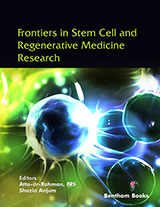Abstract
Advancements in the understanding of spinal cord injury (SCI) and repair have taken great leaps in the past decade. Although understanding has evolved significantly there continues to be major limitations in the clinical interventions available for patients with spinal cord injuries. Exogenous stem cells (ExNSC) have progressed to human clinical studies, but have limitations due to ethical issues, technique and long term outcomes. However, the use of ExSCs through a stimulatory effect on growth factors, cytokine production and neurotrophic factors post injury may be beneficial. Bone marrow derived stem cells, mesenchymal stem cells, embryonic stem cells, umbilical cord stem cells, adipose derived stem cells, NSCs, Schwann cells grafts and olfactory ensheathing cells have been various types of exogenous cell types and techniques used in SCIs. The role of endogenous stem cells (eNSCs) in SCI has been promising, but still requires better lineage analyses to fully understand the responses of NSCs after SCI. It has been demonstrated that there exists a bidirectional interaction within the neuro vascular system forming the neuro vascular niche. Purinergic receptor activation was found to alter the intrinsic properties of the ependymal stem/progenitor cells enhancing regulation of proliferation, differentiation and lineage specification after a SCI. Therapies have been described using nervous tissue in combination with various synthetic bridges to overcome the structural barriers of regeneration through bypassing the injured area. More recently, newer techniques such as electrical stimulation have been described to stimulate mature neuronal differentiation. Various groups have emphasized that the glial scar is counter productive. Anderson et al. have shown the beneficial effects of a chronic glial scar in neural tissue preservation after SCI. Moreover, they have demonstrated higher levels of chondroitin sulfate proteoglycans in injured spinal cords independent of the glial scar. In sum, we have reviewed the previous and current literature on NSC and SCI to address the neurobiological utility of NSCs in spinal cord injury.
Keywords: Clinical Neurology, Cytokine, Electrical Stimulation, Electroacupuncture, Endogenous Neural Stem Cell, Exogenous Neural Stem Cell, Genetic Fate Mapping, Glial Scar, Growth Factor, Induced Pluripotent Stem Cell, Neural Stem Cell, Neurovascular Niche, Oligodendrocyte Ensheathing Cells, Progenitor, Purinergic Receptors, Schwann Cell Transplantation, Spinal Cord Injury, Stem Cell, Transplantation, Treatment, Transcription Factor.






















